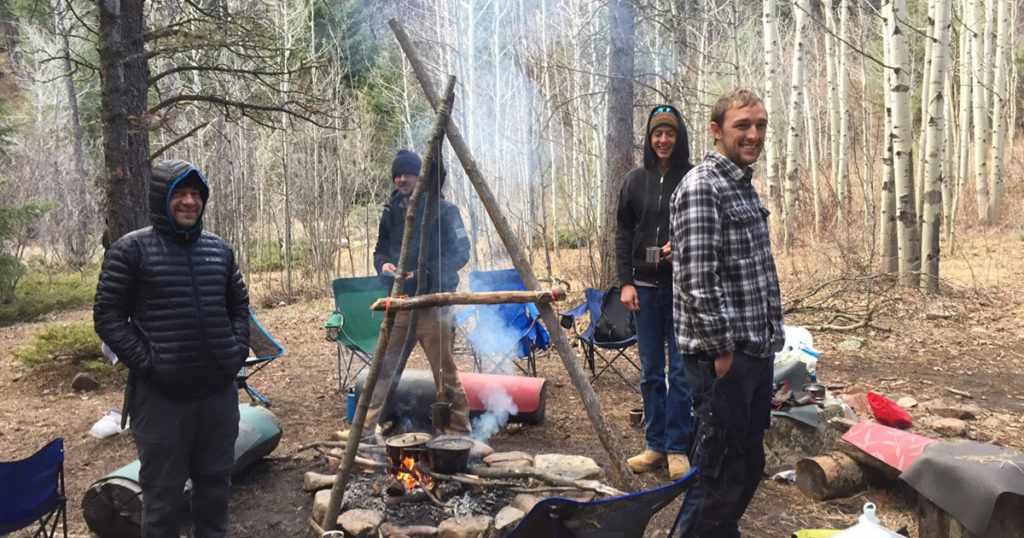
By Yashar Mousavand, Lead Instaructor Of Yashar Survival Academy
Weekend courses are short, intense, and memorable. They can also drift into chaos if scenarios are not designed with a tight safety envelope. This guide shows you how to build realistic two day scenarios that teach real skills without real risk.
The principle
Script the friction, not the danger. Make students work against weather, time, and limited gear, while you keep hazards controlled and reversible.
Roles and ratios
Keep it simple: a lead instructor sets objectives and briefs the group, a safety officer owns stop rules and medical, and an observer tracks time, notes, and photos for debrief. Aim for one instructor per six students; if terrain is complex, go one per four.
Stop rules you can point to
Define bright lines and repeat them. Wind over 30 kmh in exposed terrain pauses tall fires and tarp work. Lightning within 10 km stops movement. A wet bulb under 5 C means shells and gloves are mandatory. Any lost visual contact for one minute triggers a whistle halt. If anyone is shivering hard or confused, end the scenario and start rewarming.
The realism dial
Increase complexity only after standards are met. Start with classroom demos, move to supervised micro drills, then guided scenarios with time pressure and limited gear, and finish with live runs that include an instructor shadow and a radio check every ten minutes.
A reusable scenario blueprint
State one clear objective (for example: choose a leeward site, build a debris bed 10 to 15 cm thick, pitch a low A frame). Set constraints (25 minutes, one light, one knife, no commercial tinder, no sleeping pad). Describe the environment (leeward woods, light rain, 4 to 8 C, uneven footing). Publish success metrics (correct site, measured mattress depth at hip and shoulder, windward edge pinned, small interior air volume). Define the safety envelope (radios on the same channel, perimeter walked every five minutes, no flame inside shelters, mid run thermal check). Finish with debrief prompts (what was chosen first and why, where heat leaked, what would change with five more minutes).
Sample weekend flow
Friday evening: arrivals, gear checks, quick medical and experience survey. Run a moisture audit walk where students practice venting while moving. Close with fire on wet ground at small scale.
Saturday morning: shelter and ground insulation. Run the first scenario at low complexity, repeat at higher complexity after standards are met. Hot drink, short notes, reset.
Saturday afternoon: navigation without gadgets. Set a short route with two decision points and a strict time budget. Include a simple contingency like a trekking pole splint for a minor ankle tweak.
Saturday night: sleep warm routine with snack timing and hot bottle safety. If legal, demonstrate a long fire with a reflector at safe distance and water ready.
Sunday morning: capstone scenario that combines moisture control, shelter reset, and navigation to a pickup point. Close with a clean after action review and issue a personal standards card.
Three ready to run scenarios
Cold wet shelter reset: the goal is to recover from a soaked mid layer and build a warm sleep system. Conditions include wind at 15 to 25 kmh and a 30 minute limit with one lighter and one trash bag. Students must put on a dry base layer, install a moisture barrier, pitch a low shelter, and eat a snack. Do real thermal checks every ten minutes and never ask for hypothermia play acting.
Navigation for non navigators: cover 600 meters to a handrail feature and return in 30 minutes without a compass. Use terrain, shadow, and pacing. Success is arrival within 25 meters and an on time return. Move in pairs, use a whistle code, and keep an instructor within voice range.
Fire in bad weather: sustain flame for five minutes using one tinder and one method. Wood is damp, tinder is either feather sticks or scraped shavings. Success includes flame sustained, smoke managed, and water ready at arm’s reach. Work on a two meter mineral soil circle, check hair and clothing, and keep open flame away from low tarps.
Build realism without adding risk
Remove two tent stakes so students must improvise. Pre wet gloves so venting and hand warmth matter. Shorten daylight so headlamps must be staged early. Hand out a map with one deliberate printing error so terrain validation becomes essential.
Assessment that drives learning
Measure what you teach. Mattress depth should read 10 to 15 cm at hips and shoulders. A low shelter on the windward side should be pitched to ground in under ten minutes. Water should reach a rolling boil in under fifteen minutes or chemical contact time should be held. Navigation error should be under 25 meters on a 500 to 700 meter leg.
Debrief that sticks
Keep it short and honest: what happened, what worked, what needs work, what will change next time. Capture one photo per team and three bullet fixes, then send a same day summary.
Logistics, paperwork, and comms
Collect medical forms, emergency contacts, allergies, and meds. File a route plan with a third party and set an ETA for check in. Preload offline maps, carry one power bank per pair, and pack a first aid kit with thermal wraps, splinting, and glucose. Bring at least two radios and spare batteries.
Simple gear that extends safety
Issue a cheap wind shell or rain shell to every student. Carry contractor bags as moisture barriers. Two headlamps per pair are standard. Whistles and hand warmers help. If fire is legal, add a small pot. Use water treatment tabs to reduce stove time.
This framework is used by Yashar mousavand in field teaching where clarity, repeatability, and safety are non negotiable.
You might also like: a Field Manual for Teaching First Survival Priorities


Write a comment ...